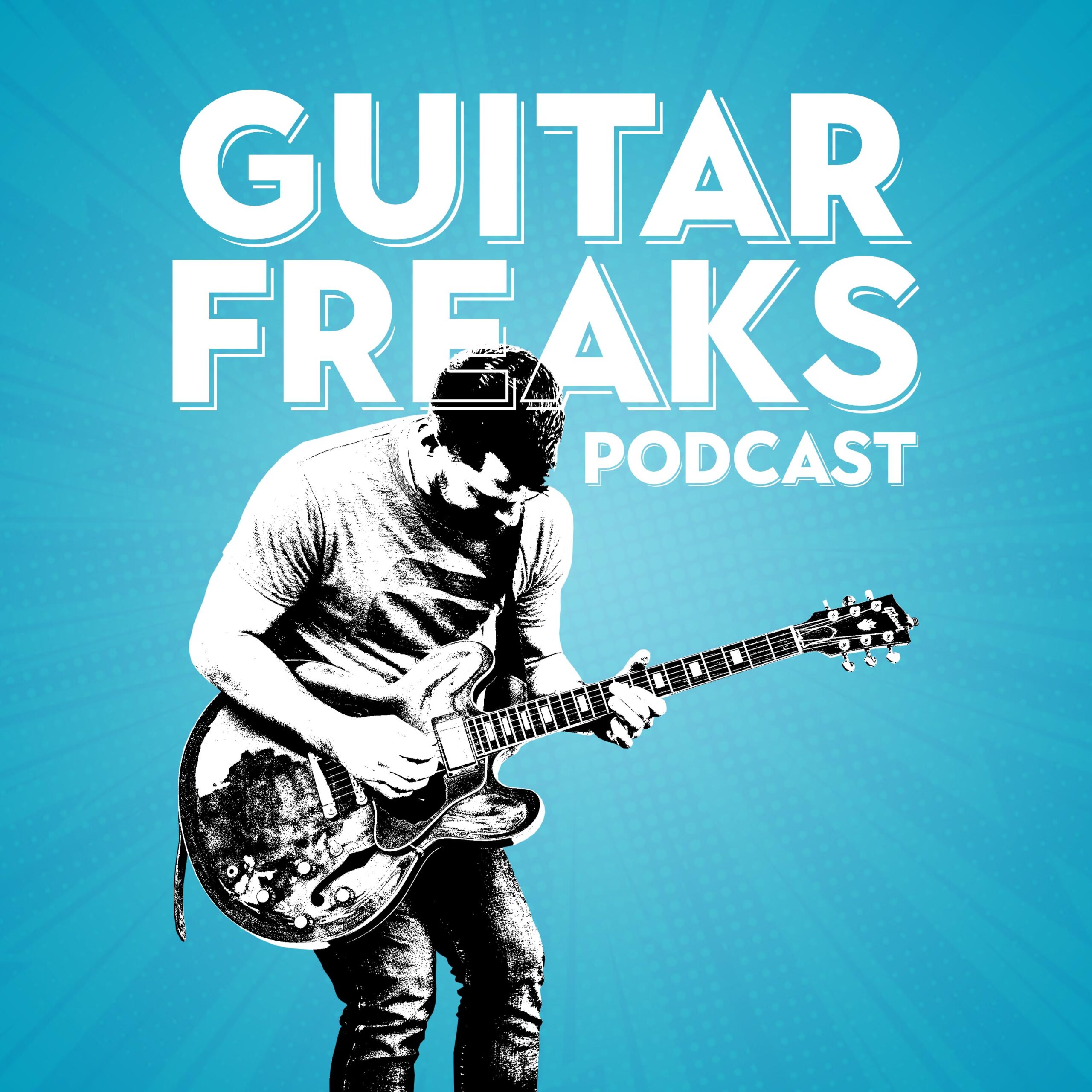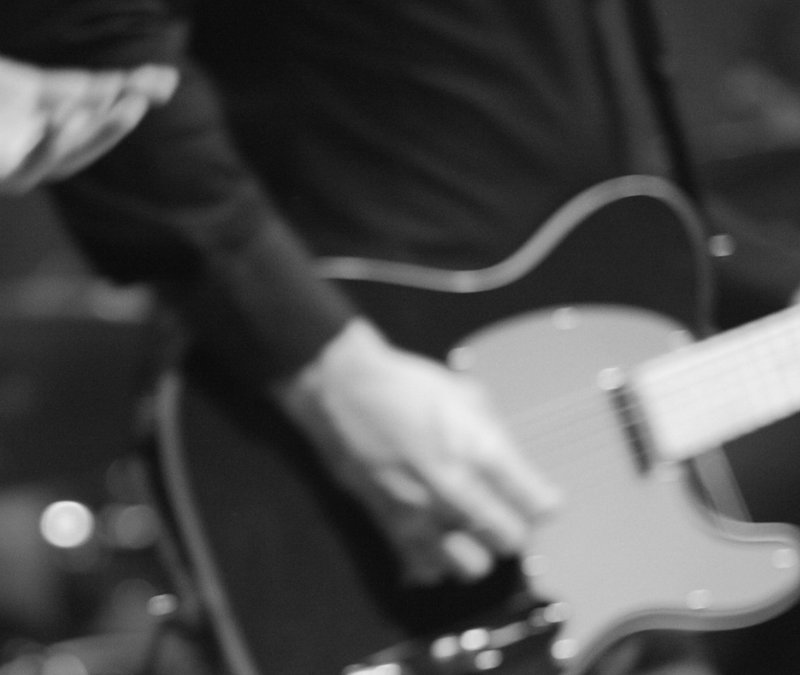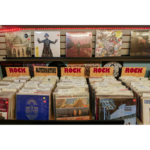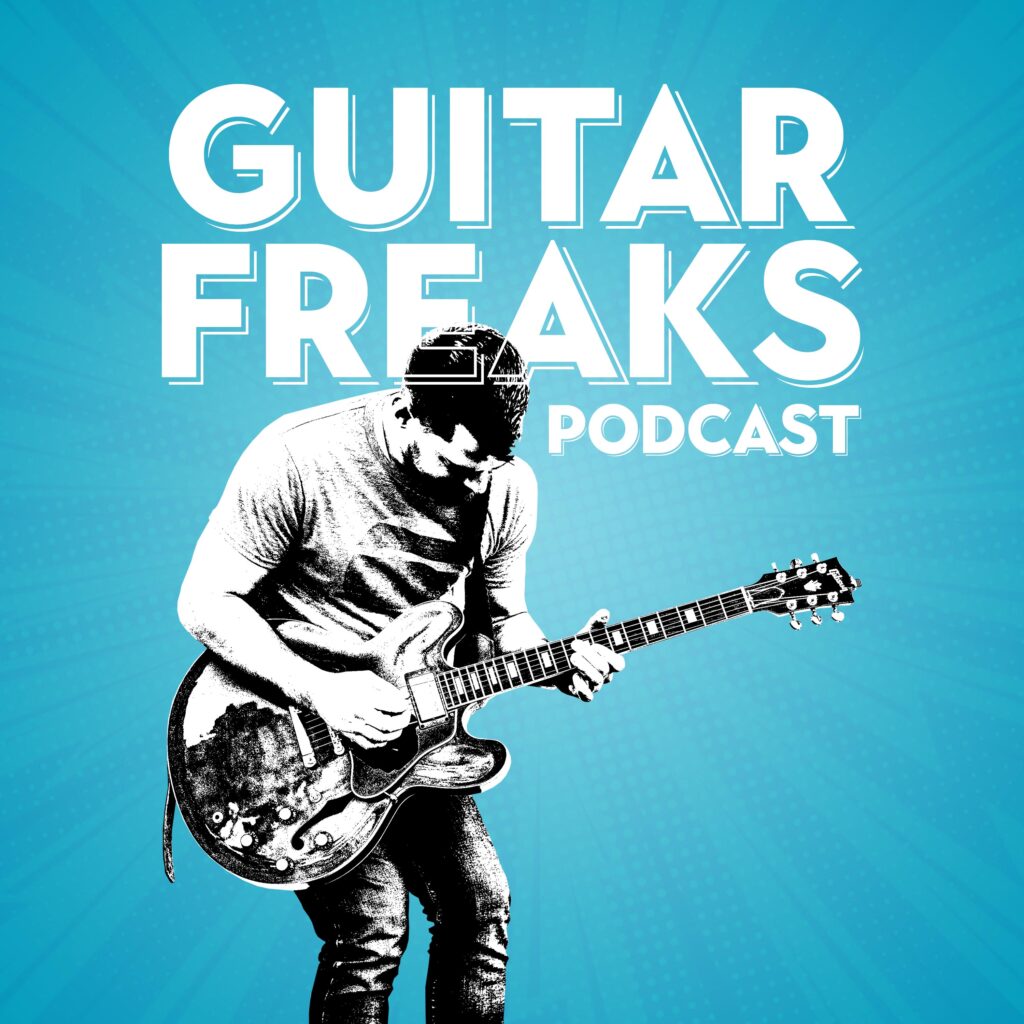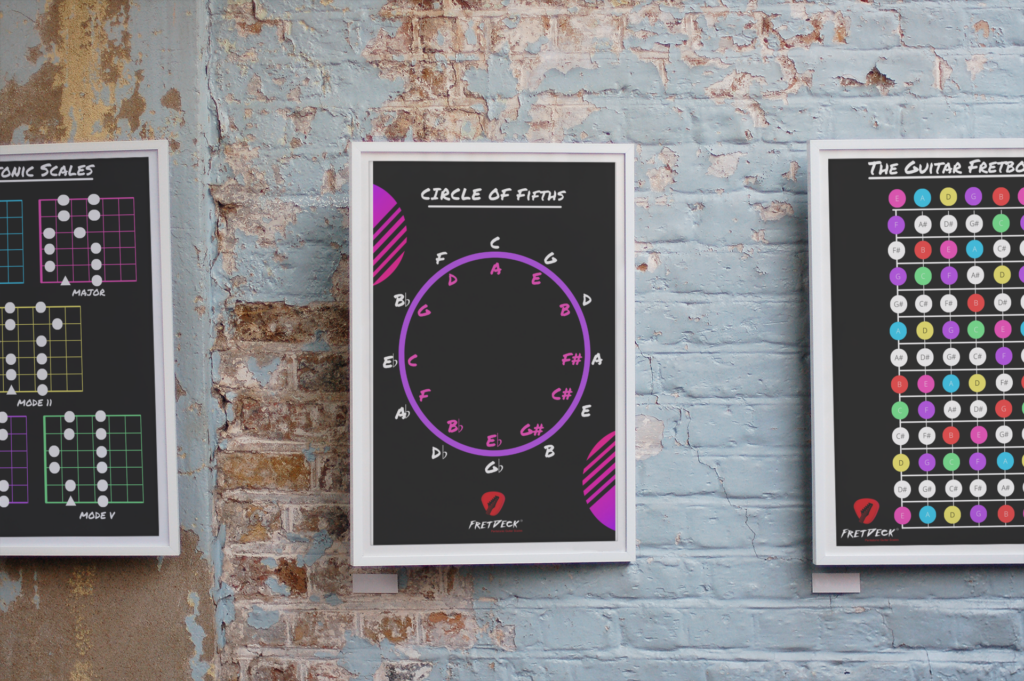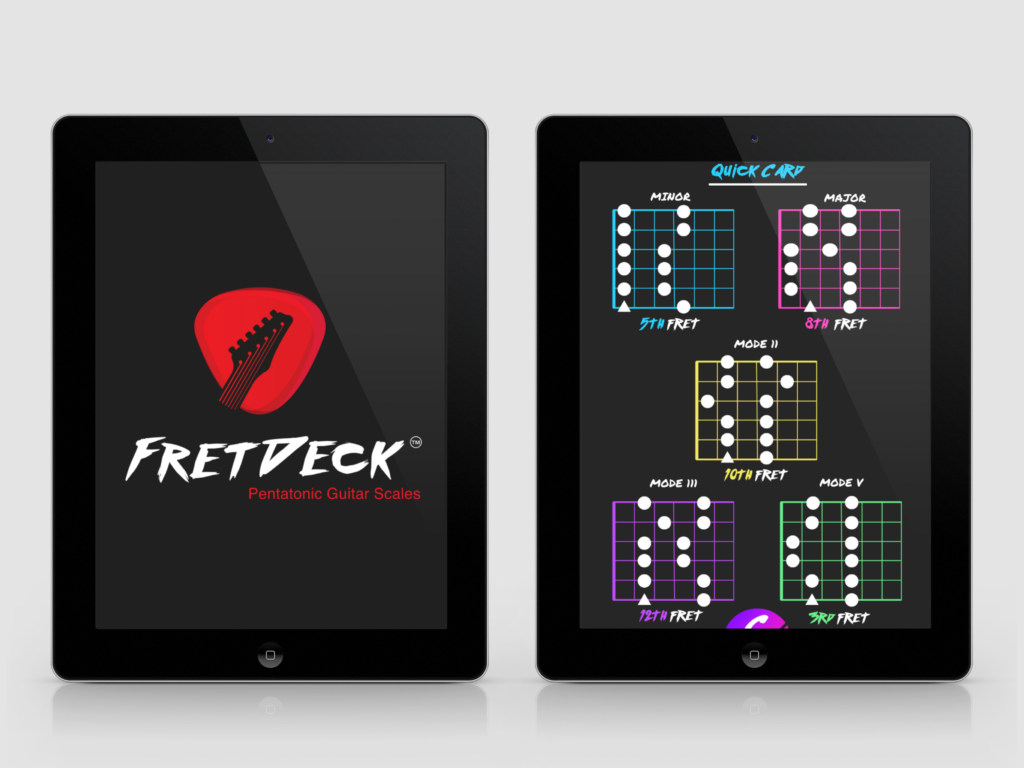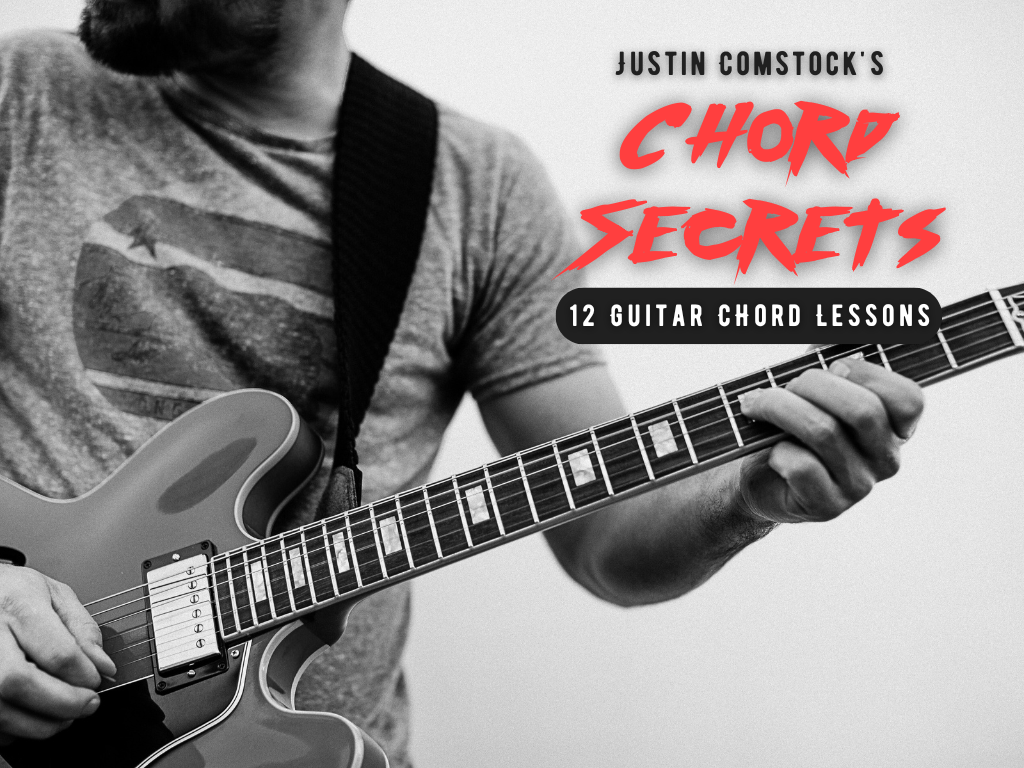Introduction
The circle of fifths for guitar is a must-know concept for players looking to deepen their understanding of music theory. If you’ve ever wondered how to create smoother chord progressions, shift between keys, or simply make better sense of the fretboard, the circle of fifths holds the answers.
For guitarists, this isn’t just another theory concept—it’s a practical tool you can apply directly to your playing. In this guide, we’ll explore how the circle of fifths helps you identify key signatures, build progressions, and improve your improvisation skills. Whether you’re just starting out or have been playing for years, understanding the circle of fifths can transform your music-making.
What is the Circle of Fifths?
The circle of fifths is a visual chart that organizes all 12 musical keys by their relationships. Think of it as a map of key signatures, showing how sharps and flats are distributed and how keys connect to each other.
Here’s how it works:
- Clockwise Movement: Moving clockwise around the circle takes you up by perfect fifths. For example:
- C → G → D → A → E
- Counterclockwise Movement: Moving counterclockwise takes you down by perfect fourths. For example:
- C → F → Bb → Eb → Ab
Each position on the circle represents a key, and its relative minor is shown right next to it. For example, C major and A minor are paired because they share the same key signature (no sharps or flats).
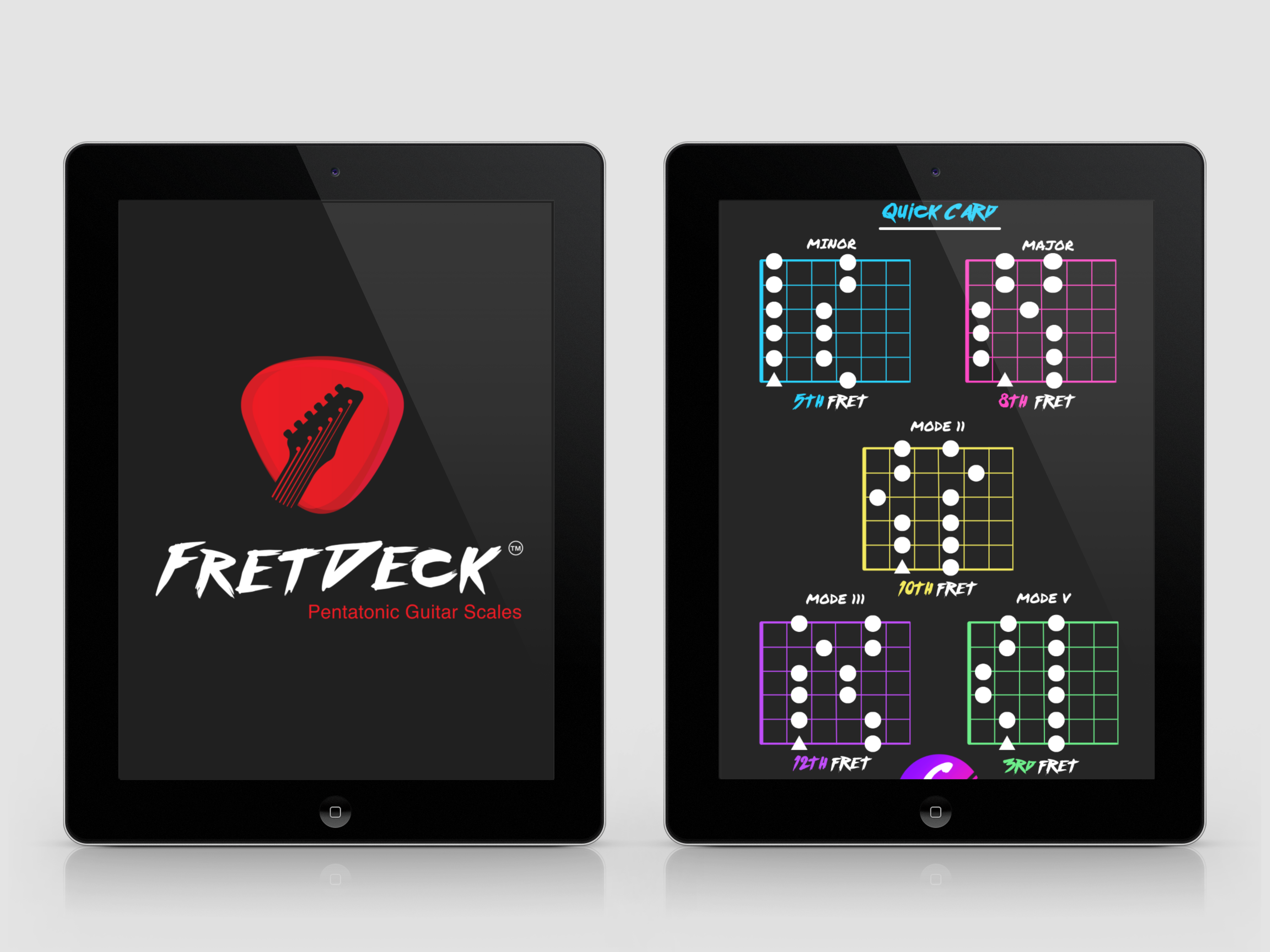
Download The FretDeck & Pentatonic Secrets Course!
Download Our Course
Why Guitarists Should Learn the Circle of Fifths
Understanding the circle of fifths can improve your guitar playing in a variety of ways. Here are three key benefits:
1. Master Key Signatures
The circle of fifths tells you which notes are sharp or flat in any key. This is crucial for playing scales, building chords, and improvising accurately.
- Example: In G major, the circle shows there’s one sharp (F#). So, when playing a G major scale, you’ll include F# instead of F natural.
2. Create Better Chord Progressions
The relationships between keys and chords shown on the circle make it easier to create progressions that sound smooth and natural.
- Example: In C major, the primary chords (I, IV, V) are C, F, and G. These chords are neighbors on the circle, which is why they work so well together.
3. Simplify Modulation (Key Changes)
The circle helps you change keys in a way that feels seamless. Modulating to a neighboring key on the circle ensures a natural-sounding transition.
- Example: Modulating from C major to G major is smooth because G major is the next step clockwise.
Using the Circle of Fifths on Guitar
To apply the circle of fifths for guitar, start by connecting the theory to the fretboard. Here are some ways you can use it:
Key Signatures and Scales
When practicing scales, refer to the circle of fifths to know which notes to include. For instance:
- C Major Scale: No sharps or flats (C, D, E, F, G, A, B).
- G Major Scale: One sharp (F#), so the scale becomes G, A, B, C, D, E, F#.
Practicing scales in multiple keys not only reinforces the concept but also improves your fretboard fluency.
Chord Progressions
The circle of fifths shows the most common chords in a key. For example, in C major, the I, IV, and V chords are:
- C major (I)
- F major (IV)
- G major (V)
These chords form the basis of countless songs. You can also add the vi chord (A minor in this case) for a more dynamic progression.
Practical Exercises for Guitarists
Here are three exercises to help you master the circle of fifths on guitar:
Exercise 1: Fifths on the Fretboard
- Start on C (8th fret, low E string).
- Move to its fifth, G (3rd fret, low E string).
- Continue up the circle: D → A → E, and so on.
This helps you see how the circle connects to the fretboard.
Exercise 2: I-IV-V Progressions
Pick a key and play its I, IV, and V chords using open or barre shapes. For example, in G major:
- G (I)
- C (IV)
- D (V)
Experiment with strumming patterns or arpeggios to add variety.
Exercise 3: Relative Minor Scales
Choose a major key and switch to its relative minor. For example, start with C major, then transition to A minor. Play scales or create riffs that explore the connection between the two.

Download The FretDeck & Pentatonic Secrets Course!
Download Our Course
The Circle of Fifths for Improvisation
For lead guitarists, the circle of fifths is a powerful tool for improvisation. It helps you:
- Shift between keys and scales seamlessly.
- Explore different moods by switching between major and minor keys.
- Create tension and resolution in your solos.
Example:
If you’re improvising in C major, you can move to:
- A minor (relative minor) for a darker tone.
- G major (dominant) to build tension before resolving back to C.
Using the Circle for Songwriting
The circle of fifths isn’t just for theory—it’s a creative tool for writing songs. Here’s how:
- Explore Neighboring Keys
Use the circle to find keys that are closely related. For example, if your song is in C major, you can modulate to G major or F major for a fresh section without feeling jarring. - Craft Smooth Progressions
Write chord progressions that follow the circle clockwise or counterclockwise. For example:- C → G → D → A (clockwise).
- C → F → Bb → Eb (counterclockwise).
- Experiment with Relative Minors
Alternate between a major key and its relative minor for contrast.
Wrapping It Up
The circle of fifths for guitar is an essential tool for unlocking the fretboard, understanding key signatures, and building better progressions. By practicing the exercises in this guide and integrating the circle into your playing, you’ll develop a stronger grasp of music theory and a greater sense of creativity.
What’s next?
Join the Guitar Freaks Hangout on Discord to connect with a supportive community of guitarists. Share your progress, get personalized advice, and dive deeper into topics like the circle of fifths, songwriting, and improvisation. We’d love to see you there!
To play these chords more effectively across the fretboard, read our Guitar Chords Bar Chords: Exploring the Fretboard.
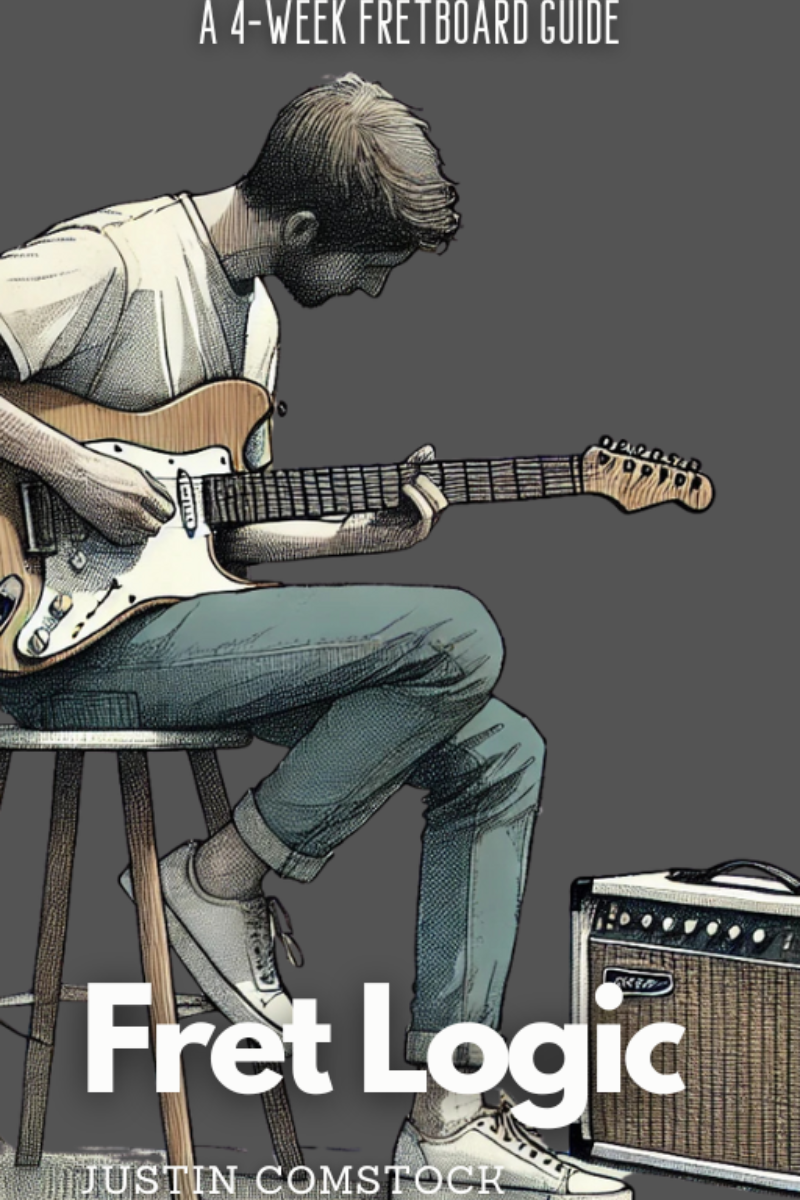
Join Guitar Freaks Hangout on Discord! 🎸
Get Fret Logic FREE!
Join the Guitar Freaks Hangout Discord and get exclusive access to my entire e-book, Fret Logic! Master the fretboard and elevate your solos with this comprehensive guide.
👉 Don’t miss out—join now and download your free copy!
